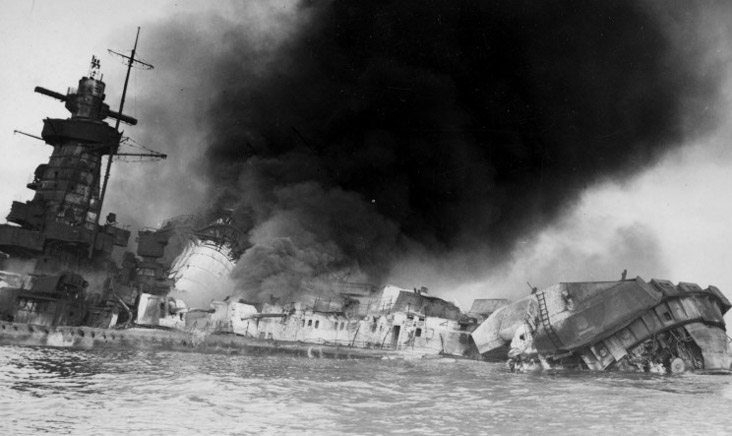Germany Lost That War: How Can She Win This?
The War Illustrated, Volume 1, No. 20, Page 612, January 19, 1940.
In 1918 Imperial Germany reached the zenith of her conquests, and in a few brief months crashed into stupendous ruin and defeat. In 1939 Nazi Germany set out on the same trail, yet (as this article and the accompanying maps show) with a much smaller territory as a jumping-off ground.
Maps can be eloquent things, and the two appearing in this page are indeed eloquent. They may afford some relief to those who, oppressed by a consciousness of Germany's military might and of the unthinking subservience of the German masses, fear that Hitler's Germany may be able to put up a vigorous and prolonged resistance both on the economic and military front.
Look first at that which is labelled 1918. Across it sprawls the black shape of Germany and the German-controlled realm of the last year of the Great War. It stretched for 2,000 miles from the North Sea to the mountains of Asia Minor. Germany, Austria-Hungary, Bulgaria, and Turkey were actual allies in the war, and their troops had overrun nearly all Belgium and much of north-eastern France, Serbia, Montenegro, Rumania, White Russia, and the Baltic provinces, the Ukraine and the Caucasus. Against this mighty congeries of allied and dependent countries were ranged the Powers of Western Europe – Britain, France, and Italy, with Greece as a rather unwilling ally.
Now turn to the companion map which illustrates the ranging of the Powers at the end of 1939. As in 1918 Central Europe is either German or under German occupation, but the limits of Hitler's realm are drawn much more narrowly than were those of the Kaiser.
Belgium stands outside the conflict; France's soil is inviolate; Italy boasts of her attitude of non-belligerency; Hungary, Yugoslavia, and Bulgaria are all neutral and may be expected to remain neutral as long as they are permitted to do so. Greece, Rumania, and Turkey have placed themselves under the wing of Britain and France. On the east, Soviet Russia is Nazi Germany's ally, but the alliance is economic rather than military, and up to the end of 1939, at least, Russia seemed to have had the best of the bargain. Half Poland and the three Baltic States might be held to constitute a striking justification of Stalin's foreign policy, if Finland had not to be counted in the other side of the scale.
In 1918, at the time of the conclusion of the Treaty of Brest-Litovsk between Germany and the Bolsheviks, the Germans controlled a vast area with a population of 230,000,000, of whom 83,000,000 were in the occupied territory. At the end of 1939 the Germans controlled some 110,000,000 people, of whom 42,000,000 live in the occupied territories. In 1918 Germany held the oilfields of Rumania and of Poland, the great wheat-lands of the Ukraine, the fertile plains of Hungary and Rumania, the coal mines of Belgium. In 1939 she controlled none of these sources of the vital materials of war.
Germany lost the first Great War in 1918; we may well ask ourselves whether she has any real chance of winning the second Great War in 1940.
Index
Previous article
'Graf Spee' Pays the Full Price of Defeat
All Montevideo's quays, piers, breakwaters, and adjacent coastline were densely crowded with people breathlessly watching the German corsair. The crowds stood silent as the great ship passed to sea. S
Next article
Heroes of Wartime Black-out - Unseen & Unsung
In broad terms their name is legion, not forgetting the newsvendor who still stands shivering at his wintry pitch, lustily shouting "the latest" when you can only discern him dimly by the glow of his




